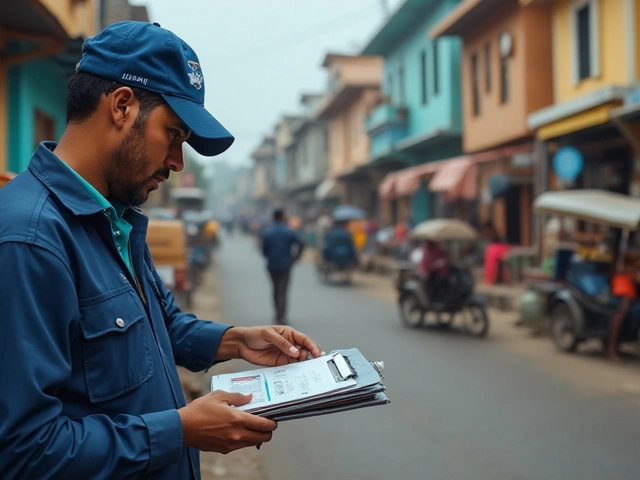Ever wondered if there's a safety net for all those precious packages you send through USPS? Well, you're not alone. Luckily, USPS does offer delivery insurance, providing a little extra peace of mind when your items are venturing across the country or even the globe.
USPS insurance is pretty straightforward, and it's all about protecting your goods against loss or damage. If you've got something of value inside that box, it might just be worth considering. Plus, it doesn't break the bank—packages valued up to $50 come with an affordable insurance option.
So how do you actually get your goods insured? It's as simple as selecting the insurance option when you're shipping. If you're doing it online, there's a checkbox for insurance. If you're at the post office, just ask for it. Bam, your parcel is now a lot safer.
- Understanding USPS Delivery Insurance
- How to Insure Your Package
- Filing a Claim: What You Need to Know
- Tips for Safe Shipping with USPS
- Alternatives to USPS Insurance
Understanding USPS Delivery Insurance
USPS delivery insurance is like having a safety net for your mail. If your package gets lost or damaged while in transit, this insurance can cover the value of the contents, up to the amount you specify. It's about securing the value of what's inside that box, providing a level of confidence in case things don't go as planned.
Here's the scoop: when you purchase insurance from USPS, you're essentially safeguarding your package against the unexpected. This could mean anything from getting lost in the mail to arriving in less than pristine condition. It starts at a low cost and automatically covers up to $100 on Priority Mail Express and up to $50 on regular Priority Mail without you needing to lift a finger.
Types of USPS Insurance
There are several types of insurance you can choose from:
- Priority Mail Express Insurance: Automatically covers your package for up to $100. And hey, if you need more, additional coverage is just another option away.
- Priority Mail Insurance: Get $50 worth of free coverage, with the option to buy more if your item is worth more than that.
- Additional Insurance: For those sending valuable goods through other USPS services like First-Class Mail, you can purchase insurance up to $5,000, giving a little extra security for peace of mind.
If stats are your thing, consider that in 2022, the USPS handled over 129 billion mail pieces. While the vast majority arrive without a hitch, having insurance can be a real game-changer for that small percentage that doesn’t.
| Service | Standard Coverage | Max Additional Coverage |
|---|---|---|
| Priority Mail Express | $100 | $5,000 |
| Priority Mail | $50 | $5,000 |
| Other USPS Services | None | $5,000 |
Next time you're fretting over a fragile or pricey item you're shipping, remember that USPS has these options ready for you. After all, it's easier to enjoy the ride knowing you’ve got a backup plan in place.
How to Insure Your Package
Alright, so you've decided that insuring your package with USPS is the way to go. Smart move! Here's the lowdown on securing that extra layer of protection for your shipments.
Step 1: Determine Your Coverage Needs
Before anything else, figure out what your item is worth. Insurance costs depend on the value of the goods you're shipping. For instance, packages valued up to $100 can be insured for a relatively low fee.
Step 2: Choose Your Method of Shipping
You can insure packages when shipping through various USPS services like Priority Mail and Priority Mail Express, which include some insurance coverage right off the bat. If you need more insurance, you can always add to it.
Step 3: Adding Insurance Online
If you're shipping online, there's usually an easy checkbox or option during the checkout process that lets you add insurance. It's almost too easy—just choose the amount and you're set!
Step 4: Insuring at the Post Office
Prefer doing things the old-fashioned way? Walk into any post office and ask the clerk to add insurance to your package. They'll guide you through the process and ensure each step makes sense.
“It's essential to consider insurance for any valuable shipments,” advises Jimmy Parks, a postal service analyst at Delivery Digest. “The peace of mind is worth the small cost.”
Step 5: Document Everything
Keep all your receipts and documents safe. That way, you're prepared if you ever need to file a claim. Email yourself a copy of the transaction just to be safe.
Ready to insure your shipment with USPS? Follow these steps, and you're on your way to a smoother, more secure shipping experience.

Filing a Claim: What You Need to Know
So, you've shipped a package with USPS and something went wrong. It happens. But don't worry, filing a claim is there as a backup option. Here’s how you can make things right without too much hassle.
Step-By-Step Claim Process
First things first, you'll need to confirm you’re eligible to file a claim. This means your package should have been insured, and you need proof of purchase, like a sales receipt. Once you've got that in check, here’s how you can file your claim:
- Gather all necessary documentation. You’ll need the mailing and recipient addresses, proof of value, and receipts.
- Head over to the USPS website and navigate to the 'File a Claim' section.
- Submit your claim online, providing all required information and documentation.
- Keep an eye on your email. USPS will send you a confirmation and any further instructions.
Timelines and Evidence
You have a set window for filing a claim, typically within 60 days from the mailing date. Being proactive is key. If your package is lost, USPS requires you to wait 15 days before initiating a claim. When it comes to damaged items, photographs are super helpful for speeding up the process.
What Happens Next?
Once you’ve filed everything correctly, USPS will do their investigation. They’re pretty thorough about it. If all checks out, you can expect reimbursement in a few weeks. They might ask for more evidence, so keep your documentation handy.
Claims Success Rates
Wondering about how often claims are successful? According to recent reports, around 85% of claims related to loss or damage are resolved positively. Although that might not be perfect, it's a pretty decent shot at getting compensated.
Handy Tips
Always save your receipts and take photos of valuable items before shipping. It sounds tedious, but trust me, it makes the claim process a breeze. And remember, having insurance is better than leaving things to chance when you’re shipping precious goods.
Tips for Safe Shipping with USPS
When you're sending something through USPS, you want it to arrive in one piece, right? Here are some handy tips to make sure your item gets to its destination safe and sound.
Choose the Right Packaging
Seems simple, but picking the proper box really does matter. Avoid reused, flimsy boxes. Instead, choose a sturdy one that fits your item snugly. Extra cushioning is a must if it still rattles around inside.
Label Clearly and Correctly
This might sound basic, but clear addressing can prevent a bunch of headaches. Double-check the address—both the sender and receiver details. Also, don’t forget to include a return address.
Use Tracking and Delivery Confirmation
Tack on tracking to your package. It gives you peace of mind and helps in case the thing goes astray. Delivery confirmation is another layer of security. You'll know when your package hits the doorstep.
Consider Insurance for Valuable Items
If you’re shipping high-value items, adding that extra bit of delivery insurance isn't a bad idea. It'll cover your loss or damage, ensuring your stuff is protected financially.
Seal It Tight
Secure your package like it’s Fort Knox. Use high-quality packing tape to seal all openings; multiple layers can provide good reinforcement.
Include an Internal Packing Slip
This little slip could be your backup plan inside. It can have the destination address and your contact info, just in case the label gets torn off.
By following these tips, you’ll not only safeguard your shipment but also make the whole process smoother for both you and the receiver.

Alternatives to USPS Insurance
If you're thinking USPS insurance isn't quite right for you, don't sweat it. There are other bright options out there for covering your shipments. Let's check out a few smart alternatives.
Private Shipping Insurance Companies
There are companies that specialize solely in shipping insurance. They often provide more tailored coverage options. Going through a private insurer might even get you lower premiums, especially if you're shipping in large volumes.
- Shipsurance: Known for competitive rates and flexible policies. They cover damages and losses with more generous terms than some standard postal services.
- U-PIC: Offers worldwide protection and customizable plans. Valuable if you're shipping overseas often.
Insurance Through Large Retailers
If you're running an e-commerce business, sometimes your selling platform or payment processor offers insurance options. Platforms like eBay and PayPal have buyer and seller protection plans, which can act as a form of insurance.
Always check what your platform offers, as they sometimes cover lost shipment issues, making additional insurance unnecessary.
Credit Card Benefits
Your credit card may already provide purchase security on items you buy. This can cover shipping losses or damage within a certain period post-purchase. Just make sure you used that card for the transaction, and it'll help if you need to make a claim.
An Extra Tip: Self-Insure for Frequent Shippers
If you ship regularly, setting aside a small fund for potential mishaps could be worth considering. Essentially, you're becoming your own safety net. Though it sounds risky, if you're managing a big volume of shipments, this could save you money over time.
Whichever way you choose, there's always a backup to USPS' delivery insurance. Just weigh the benefits and see what fits your needs.





